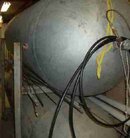mike_s
Contributor
When divers start putting their money where their mouth is and only get fills from shops that perform all required maintenance, then these shops will have an incentive to perform the maintenance, as well as be able to afford to perform this same maintenance
The shops that are still in business are those that have performed the cost benefit analysis and choose the maintenance to perform based upon what they can afford to do (or less) while remaining profitable. This is similar to the trade off the auto industry evaluates for safety recalls vs lawsuits.
We as divers set the level of safety in the Industry that supports our hobby/sport.
The list of dive shops that perform all required maintenance and meet OSHA, etc guidelines will be very short.
Keith
I wouldn't get your hopes up on seeing this happen anytime soon.
for most dive shops, air fills are merely a necessary evil that is a "loss leader" to get people in the shop for other sales.




